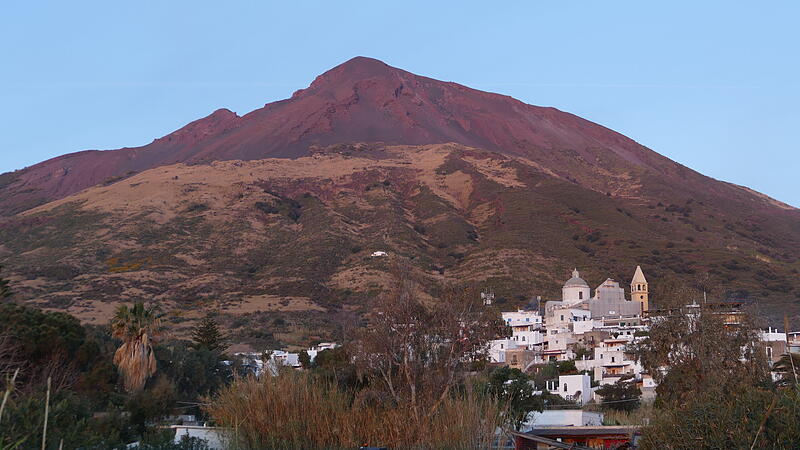I like the little guy, his name sounds so cute: Strombolicchio. But if you assume that the little one is a child or a grandchild of the almost 1000 meter high Stromboli volcano, you are wrong. Rather, the dwarf can be seen as the great-great-grandfather of today’s cone, who breathed fire when the current stromboli was not yet born, but was only slowly building up below sea level. When it appeared 160,000 years ago, it had already grown 2000 meters submarine – that’s how deep the Tyrrhenian Sea is here. On the other hand, the proto-stromboli suffered badly from erosion. Only the hard chimney, the Strombolicchio, survived a kilometer and a half from the coast.
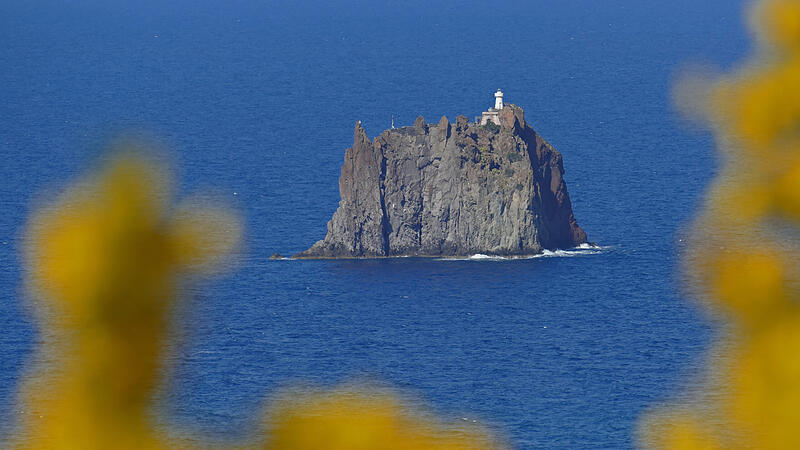

With bees and wasps through the streets
The lighthouse on this solitaire winks at the early risers on the deck of the Laurana every 15 seconds. After a 10-hour night crossing from Naples, the huge ferry docks at Scari Pier at dawn. Suddenly hectic broke out on the ship and the crew pulled away the sheets from under the nightgowns of those passengers who didn’t vacate their cabins in a flash. So let’s get off the steamer and put your foot on solid ground! Where solid is relative in this case: Stromboli is the fieryst of the seven Aeolian Islands, the volcanic archipelago in the Tyrrhenian Sea north of Sicily.
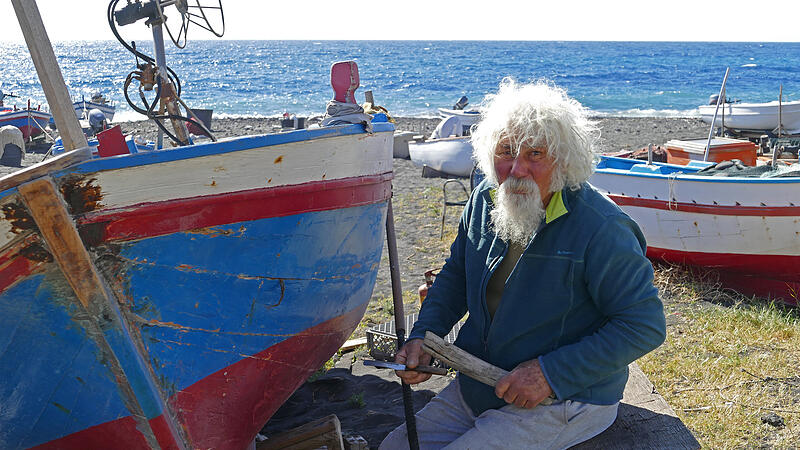

Nino is already waiting at the quay to load our luggage onto his Ape. Api, “bees”, these typical Italian tricycles are probably called because they are busy on the road. Like the donkeys of old, they transport people and goods through the narrow, steep streets of the island where cars would be out of place. The Api come from Piaggio, which made mobility with the Vespa (“Wasp”) motor scooter in the post-war years. These bees still rattle and stink on Stromboli, but now there are also four-stroke engines and E-Api. Regardless of the drive, every driver of such a “Vespacar” sees himself as a Formula 1 driver.
A first exploratory walk leads through the winding paths of the old district of San Vincenzo up to the church of the same name, in which a nativity scene reflects traditional village life. And the terrace in front of the church offers a magnificent view of the black lava sand beach. On the way back, in Via Vittorio Emanuele, on the right-hand side of a rust-red building, we notice a plaque with a washed-out inscription. With difficulty we decipher: “In questa casa dimó Ingrid Bergman che con Roberto Rossellini giró il film ‘Stromboli’ nella primavera del 1949”. So “Ingrid Bergman, who shot the film Stromboli with Roberto Rossellini in the spring of 1949, stayed in this house”.
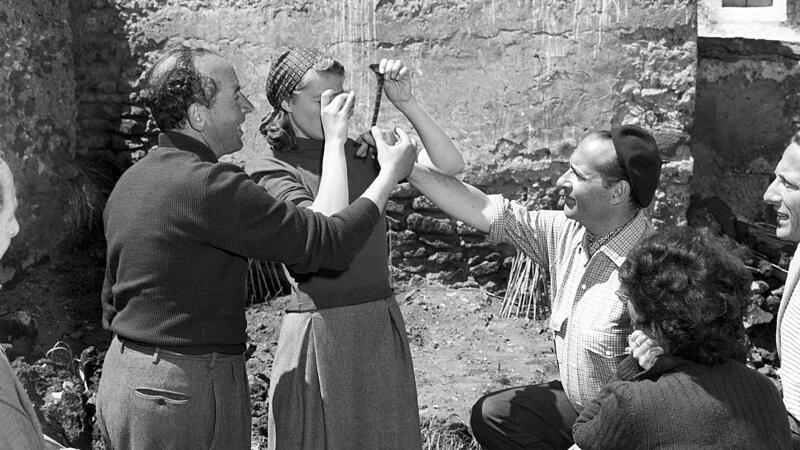

This is of course a youth-free formulation of the story. In fact, the actress and director lived together in this house, which was a scandal of the highest order in oh-so-moral Hollywood, where the flick was completed. Even more so since both son Robertino saw the light of day at the same time. But even in Catholic Italy, this wild marriage was considered a nuisance at the time, especially since the couple was married, but not to each other. Meanwhile, locals are proud that their island was chosen as the set, as Rossellini’s neo-realist drama Stromboli – Terra di Dio brought their “divine earth” to international fame overnight.
Every spring, the island’s white houses are freshly whitewashed, and if you’re not careful you’ll quickly get “smeared”. Lush vegetation unfolds in the romantically overgrown gardens. Opuntia hedges threaten intruders with their spikes, fig trees are beginning to cover their bare branches with the famous leaves, the bright yellow flowering broom is already further along, as is the spring tamarisk with its delicate pink blossoms. Hibiscus, roses, oleanders and bougainvillea will follow. Purple midday flowers frame the black sandy beach, Malvasia grapes thrive on the fertile volcanic soil, and giant fennel adorns the flanks of the Fire Mountain.
Forbidden summit happiness
In the late afternoon, the mountaineers set off, hobby hikers as well as “heavily armed” professional photographers who carry telephoto lenses and powerful tripods up the volcano. However: For a long time now, you have not been allowed to go to the Pizzo, the summit, not even with one of the guides that are otherwise required from half sea level, not to mention the overnight stays that were once permitted at the top. The colorful group of visitors “climbs” for about two hours on the panoramic mountain trail over hill and dale. Nothing can be seen of the eruptions yet, but escaping gas clouds can already be heard hissing and basalt “cannonballs” rumbling into the depths.
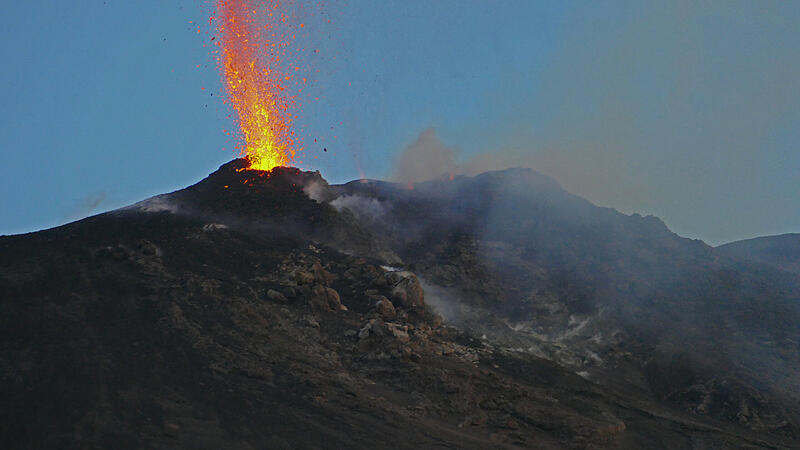

Once you have reached the vantage point at 400 meters above sea level, you first have to wait. You can only really enjoy the fire fountains shooting out of the crater in the dark. For the time being, patience is called for and often freezing. You do sweat a lot during the ascent, but it cools down rapidly when the sun goes down. Finally, the glowing ejecta, which the stromboli is currently throwing out of its gullet with a roar every 15 to 20 minutes, stands out impressively against the dark blue sky. The red chunks roll down the Sciara del Fuoco, which loosely translates to “fire slide”, into the foaming sea.
Peu-à-peu, the crowd makes its way down. If you’re lucky, the full moon shines home. At new moon you (hopefully) have a headlamp or a charged mobile phone with you. The stage destination is the Observatorio. Above all, you can observe how the (prevented) summiteers eat traditional dishes. Pizza instead of pizzo, so to speak, since the observatory is a kind of shelter. Fortunately, the restaurant is only 115 meters high, so that the practice of adding the altitude to the bill, which is often practiced in huts, hardly matters. By the way, lazy people can see the eruptions from the observatory, but not the Sciara.
The Aeolian Islands are also called the Aeolian Islands, after the Greek god of the wind, who – as Homer reports – had already caused problems for Odysseus (of course through his own fault). Modern tourists can experience the same thing on occasion, when a storm whips up the waves so much that they see beautiful breakers but not the hydrofoil “Aliscafo” that was supposed to carry them. Then Nino has to rattle from the port back to the hotel with his luggage. Since no new guests are arriving in this case either, the rooms are still free…
Source: Nachrichten

